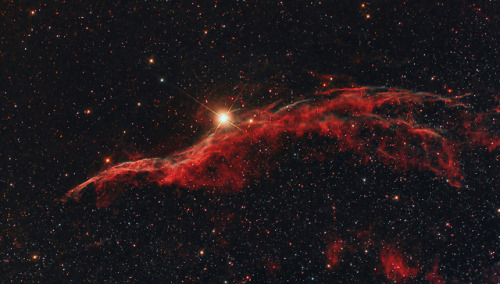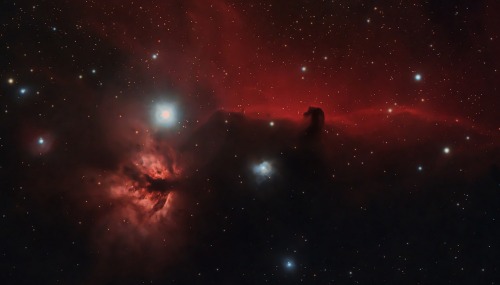Reinventing The Wheel
Reinventing the Wheel
Planning a trip to the Moon? Mars? You’re going to need good tires…

Exploration requires mobility. And whether you’re on Earth or as far away as the Moon or Mars, you need good tires to get your vehicle from one place to another. Our decades-long work developing tires for space exploration has led to new game-changing designs and materials. Yes, we’re reinventing the wheel—here’s why.
Wheels on the Moon

Early tire designs were focused on moving hardware and astronauts across the lunar surface. The last NASA vehicle to visit the Moon was the Lunar Roving Vehicle during our Apollo missions. The vehicle used four large flexible wire mesh wheels with stiff inner frames. We used these Apollo era tires as the inspiration for new designs using newer materials and technology to better function on a lunar surface.
Up springs a new idea

During the mid-2000s, we worked with industry partner Goodyear to develop the Spring Tire, an airless compliant tire that consists of several hundred coiled steel wires woven into a flexible mesh, giving the tires the ability to support high loads while also conforming to the terrain. The Spring Tire has been proven to generate very good traction and durability in soft sand and on rocks.
Spring Tires for Mars

A little over a year after the Mars Curiosity Rover landed on Mars, engineers began to notice significant wheel damage in 2013 due to the unexpectedly harsh terrain. That’s when engineers began developing new Spring Tire prototypes to determine if they would be a new and better solution for exploration rovers on Mars.

In order for Spring Tires to go the distance on Martian terrain, new materials were required. Enter nickel titanium, a shape memory alloy with amazing capabilities that allow the tire to deform down to the axle and return to its original shape.
These tires can take a lickin’

After building the shape memory alloy tire, Glenn engineers sent it to the Jet Propulsion Laboratory’s Mars Life Test Facility. It performed impressively on the punishing track.
Why reinvent the wheel? It’s worth it.

New, high performing tires would allow lunar and Mars rovers to explore greater regions of the surface than currently possible. They conform to the terrain and do not sink as much as rigid wheels, allowing them to carry heavier payloads for the same given mass and volume. Also, because they absorb energy from impacts at moderate to high speeds, there is potential for use on crewed exploration vehicles which are expected to move at speeds significantly higher than the current Mars rovers.
Airless tires on Earth

Maybe. Recently, engineers and materials scientists have been testing a spinoff tire version that would work on cars and trucks on Earth. Stay tuned as we continue to push the boundaries on traditional concepts for exploring our world and beyond.
Make sure to follow us on Tumblr for your regular dose of space: http://nasa.tumblr.com.
More Posts from Carlosalberthreis and Others
A pandemia do coronavírus (COVID-19) estará marcado na história mundial. Pois, além de ser capaz de paralisar as atividades econômicas no mundo inteiro, esta situação, para diversos economistas, poderá ocasionar uma recessão mundial bastante significativa. #FicaEmCasa

Independente de estar classificado ou não, sempre serei #Cruzeiro 🔵✨
Feliz Natal! 🤩⛪✝️

Vacina Sim

A vacina induz o organismo a criar defesas necessárias para neutralizar o vírus em uma eventual contaminação.
"··· É uma falsa equivalência equiparar o risco da vacina ao COVID. É 100.000 vezes mais perigoso não ser vacinado."
#VacinaSim


A primeira celebração dominical de 2025 foi com eles! A nossa segunda família, a família Vicentina! 🥰💙
Juno Spacecraft: What Do We Hope to Learn?

The Juno spacecraft has been traveling toward its destination since its launch in 2011, and is set to insert Jupiter’s orbit on July 4. Jupiter is by far the largest planet in the solar system. Humans have been studying it for hundreds of years, yet still many basic questions about the gas world remain.

The primary goal of the Juno spacecraft is to reveal the story of the formation and evolution of the planet Jupiter. Understanding the origin and evolution of Jupiter can provide the knowledge needed to help us understand the origin of our solar system and planetary systems around other stars.

Have We Visited Jupiter Before? Yes! In 1995, our Galileo mission (artist illustration above) made the voyage to Jupiter. One of its jobs was to drop a probe into Jupiter’s atmosphere. The data showed us that the composition was different than scientists thought, indicating that our theories of planetary formation were wrong.
What’s Different About This Visit? The Juno spacecraft will, for the first time, see below Jupiter’s dense clover of clouds. [Bonus Fact: This is why the mission was named after the Roman goddess, who was Jupiter’s wife, and who could also see through the clouds.]

Unlocking Jupiter’s Secrets
Specifically, Juno will…
Determine how much water is in Jupiter’s atmosphere, which helps determine which planet formation theory is correct (or if new theories are needed)
Look deep into Jupiter’s atmosphere to measure composition, temperature, cloud motions and other properties
Map Jupiter’s magnetic and gravity fields, revealing the planet’s deep structure
Explore and study Jupiter’s magnetosphere near the planet’s poles, especially the auroras – Jupiter’s northern and southern lights – providing new insights about how the planet’s enormous
Juno will let us take a giant step forward in our understanding of how giant planets form and the role these titans played in putting together the rest of the solar system.
For updates on the Juno mission, follow the spacecraft on Facebook, Twitter, YouTube and Tumblr.
Make sure to follow us on Tumblr for your regular dose of space: http://nasa.tumblr.com


NGC 6960 (Western Veil nebula) & Horsehead Nebula and the Flame Nebula
by David Wills
Como se formou o Sistema Solar?
Acho que muitos devem saber, existia uma nuvem de poeira e gás, e por alguma perturbação esse gás e essa poeira começaram a se aglutinar até dar origem ao Sol e ao seu disco protoplanetário.
Mas o que perturbou originalmente a nuvem? Sempre se falou de que a onda de choque gerada por uma supernova poderia ter feito, sempre foi falado, mas agora pode ter sido provado.
Um grupo de astrônomos estudaram núcleos de vida curta presentes em meteoritos, núcleos que só podem ter sido criados no interior de supernovas.
Basicamente os pesquisadores estudaram o berílio-10, um núcleo radioativo de vida curta vastamente distribuído nos meteoritos.
Esse berílio-10 pode ter sido gerado por vários processos, inclusive pela explosão de uma supernova de grande massa ou de uma de baixa massa.
Ao modelar a presença do berílio-10 de maneira geral nos meteoritos só sobrou a chamada supernova de colapso de núcleo de baixa massa para explicar essa abundância, além também de explicar a presença de outros elementos como o cálcio-41, o paládio-107 entre outros.
Quando falamos que os asteroides e consequentemente os meteoritos guardam os segredos da formação do Sistema Solar, estamos dizendo exatamente isso, num estudo praticamente forense, é possível detectar resquícios do início da vida do nosso Sistema Solar a 4.6 bilhões de anos atrás.
Obviamente serão necessários mais estudos para confirmar essa hipótese com o menor grau de incerteza, estudos posteriores terão que ser realizados, até mesmo para explicar alguns mistérios, que podem ser atribuídos a outras fontes.
Mas, por enquanto, aquela velha frase é mais valida do que nunca, somos feitos de poeira e de restos de estrelas!!!
(via https://www.youtube.com/watch?v=w7X1Lc7CmxI)
Se um dia a água percolou pela superfície de Marte, talvez, o Mawrth Vallis, seja uma das melhores feições que podem guardar os segredos dessa época remota do Planeta Vermelho.
O vale na verdade é um extenso canal com 600 km de comprimento, cercado por paredes com 2 km de altura.
Esse clássico canal, fica localizado na região de divisa entre as terras altas do sul e as planícies do norte marciano.
Esse belo vídeo, usa os dados da sonda Mars Express, para nos levar numa viagem pelo Mawrth Vallis.
A viagem começa na boca do canal que fica na Chryse Planitia e segue em direção a aparente fonte do canal que fica em Arabia Terra.
O platô com seus 4 bilhões de anos é caracterizado pela grande quantidade de crateras de impacto, indicando a elevada idade.
A sonda Mars Express mostra em zoom manchas mais claras e mais escuras pela superfície de Marte.
As manchas claras são camadas de sedimentos que estão entre os maiores afloramentos de minerais argilosos em MArte. A sua presença é a pista fundamental que nos diz que no passado a água líquida esteve presente nessa região.
A variedade de minerais aquosos, e a possibilidade de que essa região possa conter um registro de um antigo ambiente habitável em Marte, levou os cientistas a proporem o MAwrth Vallis como candidato para o pouso do rover da ExoMars 2020.
Esse nome estranho, Mawrth é na verdade a palavra galesa para Marte e Vallis, o latim para Vale, ou seja, o Vale de Marte.
A sonda Mars Express possui uma câmera estéreo que consegue fazer essas projeções tridimensionais juntamente com um modelo digital de terreno de Marte.
Espero que curtam a viagem!!!
(via https://www.youtube.com/watch?v=6JlG2OoReGA)
Você Nunca Esteve Sozinha
Um jeito diferente de expressar.
Sempre firme com os seus princípios.
Fez o povo se encantar.
Por isso eu concordo e afirmo:
"Fenômenos não se explicam, fenômenos se admiram!"
#VocêNuncaEsteveSozinha #TeamJuliette #JulietteFreire #Globoplay

-
 riatofrubuddges liked this · 1 year ago
riatofrubuddges liked this · 1 year ago -
 profaranti liked this · 1 year ago
profaranti liked this · 1 year ago -
 fluffy-crimp liked this · 2 years ago
fluffy-crimp liked this · 2 years ago -
 giaminhtieutu liked this · 3 years ago
giaminhtieutu liked this · 3 years ago -
 effectiveformula liked this · 4 years ago
effectiveformula liked this · 4 years ago -
 gistmatas-blog reblogged this · 4 years ago
gistmatas-blog reblogged this · 4 years ago -
 lulal liked this · 4 years ago
lulal liked this · 4 years ago -
 cainite-bite liked this · 4 years ago
cainite-bite liked this · 4 years ago -
 00allthelikes reblogged this · 4 years ago
00allthelikes reblogged this · 4 years ago -
 thoustve reblogged this · 4 years ago
thoustve reblogged this · 4 years ago
